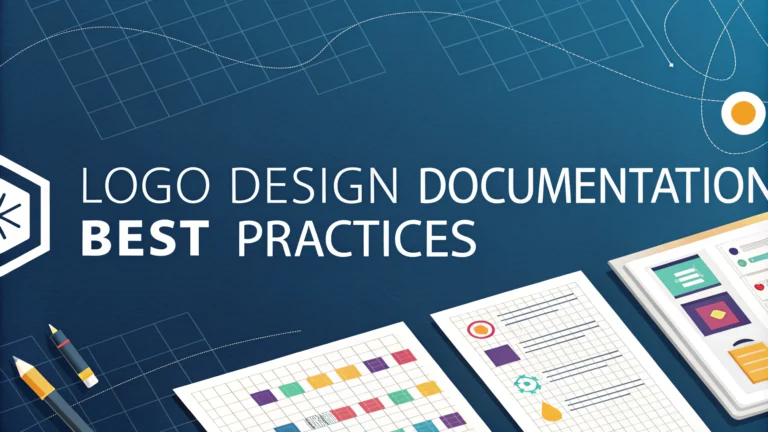Documentation is an essential step in logo design that protects both designers and clients while ensuring project success.
Project Brief Documentation
A well-written project brief outlines the client’s business goals, target audience, and design preferences.
- Company background and history
- Target market demographics
- Competitor analysis
- Design preferences and restrictions
- Project timeline and deliverables
- Budget parameters
Design Process Documentation
Record each stage of the design process with dated entries and version numbers.
- Initial sketches and concepts
- Digital drafts and iterations
- Client feedback and revisions
- Color palette development
- Typography selection
Technical Specifications
Document all technical aspects of the logo for future reference and consistency.
| Element | Details to Document |
|---|---|
| Colors | CMYK, RGB, Pantone, HEX codes |
| Typography | Font names, sizes, spacing |
| Dimensions | Minimum sizes, proportions, clear space |
| File Formats | AI, EPS, PDF, PNG, JPG specifications |
Usage Guidelines
Create a simple brand guidelines document that specifies how the logo should and shouldn’t be used.
Include:
- Permitted color variations
- Minimum size requirements
- Clear space specifications
- Incorrect usage examples
- Background compatibility
Legal Documentation
Maintain records of all legal aspects related to the logo design.
- Client contract and agreements
- Copyright transfer documents
- License terms and usage rights
- Payment records and invoices
- Client sign-off forms
File Organization
Establish a clear file naming and organization system for all logo assets.
ProjectName_LogoType_ColorVersion_Date Example: Nike_Primary_FullColor_2023
Delivery Package
Prepare a complete package of logo files for client delivery.
- Master vector files (AI, EPS)
- Web-ready formats (PNG, JPG)
- Black and white versions
- Brand guidelines PDF
- Technical specifications sheet
Store all documentation in both digital and physical formats with proper backups.
Maintenance Records
Keep track of any logo updates or modifications over time.
- Version history
- Modification dates
- Reason for changes
- Client approval records
Contact the American Institute of Graphic Arts (AIGA) for more resources on logo design documentation standards.
Client Communication Records
Archive all client communications throughout the logo design project for reference and clarity.
- Email correspondence
- Meeting notes and summaries
- Phone call records
- Feedback documentation
- Change requests
Quality Control Documentation
Implement a checklist system to ensure all deliverables meet quality standards.
- Vector artwork integrity check
- Color accuracy verification
- Typography consistency review
- File format compatibility testing
- Resolution and scaling validation
Archive Management
Create a comprehensive archival system for long-term storage and accessibility.
- Cloud-based backup solutions
- Local storage redundancy
- Organized folder structures
- Version control systems
- Access permissions documentation
Conclusion
Thorough documentation in logo design serves multiple purposes: protecting intellectual property, ensuring consistent implementation, and facilitating future modifications. A systematic approach to documentation helps maintain professional standards and builds trust with clients. Regular updates and proper organization of these documents contribute to the long-term success of the brand identity.
Key Takeaways:
- Maintain comprehensive records from brief to delivery
- Implement clear file organization systems
- Keep detailed technical specifications
- Archive all client communications
- Ensure proper legal documentation
FAQs
- What are the essential elements every logo design should include?
A logo should include appropriate typography, meaningful symbolism, scalability, memorable design elements, and colors that reflect the brand’s identity and values while maintaining simplicity and versatility. - What file formats should I deliver to clients for their logo package?
Deliver AI or EPS (vector formats), PNG (with transparent background), JPG, PDF, and both RGB (digital) and CMYK (print) color versions. Include multiple size variations and both color and monochrome versions. - How many logo concepts should be presented to a client?
Present 3-5 distinct logo concepts to provide adequate choice without overwhelming the client. Each concept should be unique and align with the client’s brief while offering different creative approaches. - What’s the importance of negative space in logo design?
Negative space ensures logo readability, creates visual interest, allows for clever dual imagery, and helps the logo remain effective when scaled down or viewed from a distance. - How do I ensure my logo design is timeless?
Avoid trendy elements, use classic typography, focus on simplicity, ensure it works in black and white, and create a design that communicates the core brand values rather than following current design fads. - What’s the optimal grid system for logo construction?
Use a mathematical grid system based on consistent ratios (like the Golden Ratio 1:1.618) to ensure proper proportions, spacing, and alignment of all logo elements for visual harmony and reproducibility. - How should color psychology be applied in logo design?
Select colors based on their psychological associations and industry standards – blue for trust and professionalism, red for energy and passion, green for growth and nature, ensuring colors align with brand values and target audience. - What are the legal considerations in logo design?
Ensure original design without copyright infringement, check trademark availability, use licensed fonts, provide proper documentation of ownership transfer, and create a formal contract outlining usage rights. - How do I make sure a logo works across different mediums?
Test the logo at various sizes, on different backgrounds, in print and digital formats, and ensure it maintains clarity and impact whether on a business card or billboard. - What should be included in a logo design brief?
Include company background, target audience, competitors, desired emotions/messages, color preferences, intended usage scenarios, design style preferences, and any specific technical requirements.







